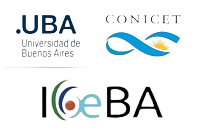Rodrigo Javier Suárez, Pablo Diego González, Sebastián Oriolo, Martín Nazareno Parada, Miguel Esteban Ramos, Matías C. Ghiglione, Claudia Zaffarana, Juan Albano and Juan José Ponce
2 024
Journal of the Geological Society Volume 181, 17 May 2024
The Devonian to early Carboniferous western margin of Patagonia (South America) includes a NW–SE-trending magmatic arc associated with a NE-dipping palaeo-subduction zone. Along the Andean region of southern Patagonia, the Eastern Andean Metamorphic Complex developed in a forearc position and consists of a succession of very low- to low-grade metaturbidite–metabasic rocks emplaced from the Devonian to Carboniferous. There are significant uncertainties surrounding this metamorphic complex, mainly related to the tectonosedimentary setting of the basin and the subsequent conditions of deformation and metamorphism, which hinder our understanding of the orogenic architecture. To reveal the links between tectonics and metamorphism, we conducted a structural analysis and sampled metapelites to measure the illite crystallinity along a regional structural cross-section in the Eastern Andean Metamorphic Complex. Our analysis reveals broadly lower to upper anchizonal metamorphism roughly synchronous with deformation along northwards-verging thrusts. These findings support the development of a forearc hyperextended basin that was subsequently closed during the Gondwanide Orogeny (late Paleozoic), a model that reconciles previous proposals suggesting passive margin v. back-arc basin models. This closure led to the emplacement of supra-subduction zone ophiolites and turbidites over the continent through the landwards migration of brittle–ductile reverse shear zones.
